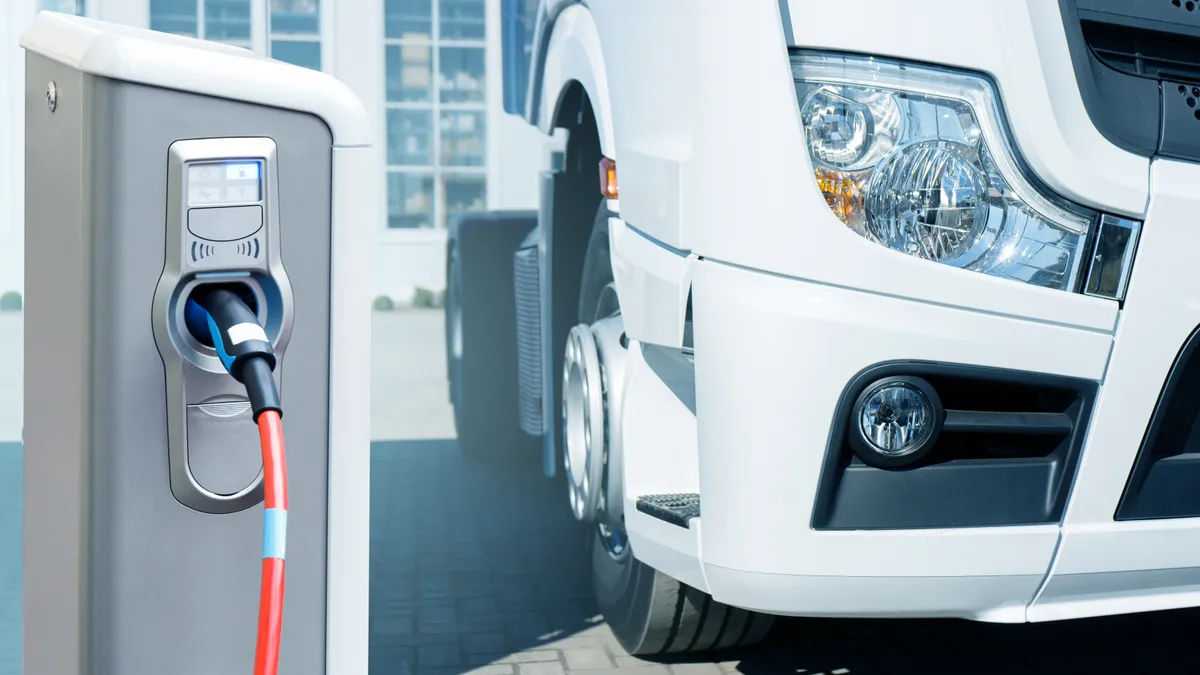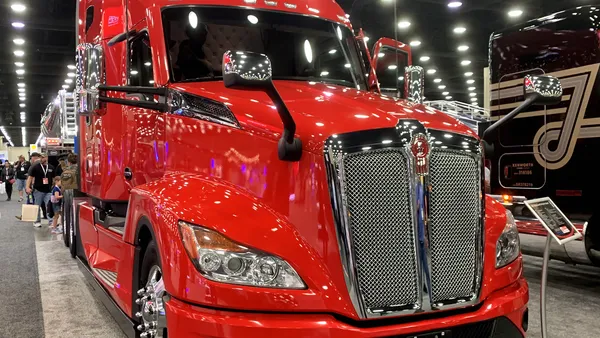Dive Brief:
- Nearly 20 states and jurisdictions have signed on to an action plan striving for 100% electric medium and heavy-duty vehicle sales by 2050.
- The plan includes policy recommendations for local lawmakers to consider when crafting legislation aimed at boosting adoption of electric trucks and buses. A coalition of 17 states plus Washington, D.C., and the Canadian province of Quebec helped develop the plan, facilitated by the Northeast States for Coordinated Air Use Management.
- Recommendations include adding more electric charging infrastructure, requiring fleets to submit data about their use of electric vehicles and that states subsidize a portion of fleets’ cost differential when buying an electric versus traditional truck.
Dive Insight:
Nearly half of the U.S. population is represented under the plan, as well as 36% of the country's medium and heavy-duty vehicles. Advocates hope it will give states needed tools to encourage, and if needed enforce, electric truck adoption.
Facilitated by the Northeast States for Coordinated Air Use Management (NESCAUM), the plan is the result of a task force dating back to 2013; the coalition of now 17 states, Washington, D.C. and Quebec has been working since 2020 specifically to develop the action plan, a draft of which was released for public comment this spring.
Participating jurisdictions have committed to strive for at least 30% electric medium and heavy-duty vehicle sales by 2030, and 100% by 2050.
Policy recommendations in the "Multi-State Medium- and Heavy-Duty Zero-Emission Vehicle Action Plan" are often based on best practices from participating states. It particularly highlights California's Advanced Clean Trucks regulation, pushing states to establish zero-emission sales requirements for trucks, as well as a one-time fleet reporting requirement.
Climate advocates have applauded the plan and its creation of a "consistent regulatory framework" to make widespread fleet electrification a reality, said Ryan Gallentine, policy director at Advanced Energy Economy, a trade association that advocates for electrified transport in the U.S.
"We’d recommend states take as much of the wisdom from the Action Plan as they can and create a custom list of actions to electrify their MHD fleets and improve air quality," Gallentine said in an email.
Several participating states have pushed ahead with their own electrification plans, many of which are aligned with or even more aggressive than the NESCAUM action plan. Washington and Oregon, for example, have already adopted California’s Advanced Clean Trucks rule, and last year New York set a goal for all new medium and heavy-duty truck sales to be electric by 2045.
The plan also presents action items for utilities and utility regulators to coordinate with fleets around establishing charging infrastructure that is tailored to truck charging needs. A lack of charging infrastructure has been a stumbling for companies looking to electrify their fleets.
A key priority throughout the plan is its focus on creating an equitable electrification transition for underserved communities and workers who have been most affected by greenhouse gas emissions.
The plan calls for states to deliver "early benefits to communities historically exposed to higher levels of air pollution, including reserving a percentage of funding for deployments that will benefit state-defined overburdened communities." It also encourages specific support for small fleets, minority-owned fleets, and independent owner-operators.
States have continued to join the coalition since work on the plan began in 2020, with Nevada signing on in March. Moving forward, Gallentine urged more states to consider joining and taking up the cause, putting tangible work behind the plan.
"Taken together the action plan represents probably the most comprehensive set of policy recommendations for [medium and heavy-duty] electrification as has ever been assembled, but it’s only as good as the concrete actions that are put in place as a result," Gallentine said.











